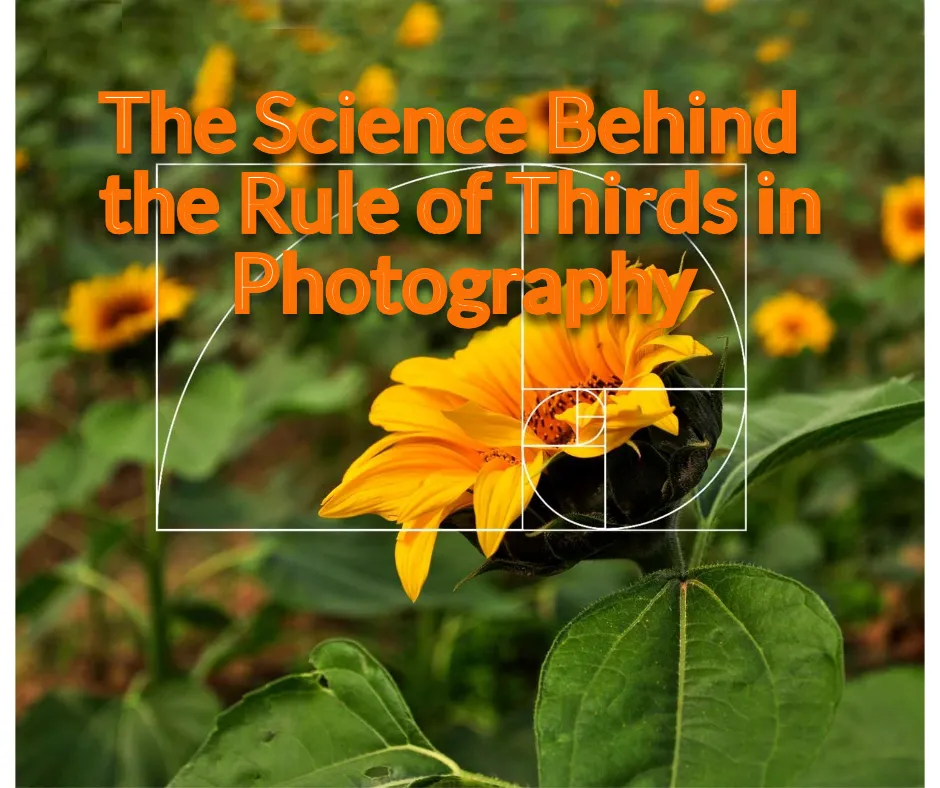The Science Behind the Rule of Thirds in Photography: Principles and Practice
Photography is an art form that has captured the world’s attention for centuries.
From capturing historical moments to showcasing the beauty of nature, photography has become an essential medium for self-expression and storytelling.
As photographers, we are constantly seeking ways to improve our craft and create captivating images that stand out from the rest.
One principle that has been widely used and praised in the photography world is the “Rule of Thirds.
” This simple yet powerful technique has been applied by professionals and amateurs alike to create balanced, visually appealing compositions.
But what exactly is the science behind this rule, and how can we effectively incorporate it into our photography? In this article, we will delve into the principles and practice of the Rule of Thirds, exploring its origins, scientific reasoning, and practical applications.
By understanding the science behind this rule, we can elevate our photography skills and take our images to the next level.
So, let’s dive into the world of the Rule of Thirds and discover its secrets to creating stunning and impactful photographs.
Composition: Rule of Thirds Explained
The rule of thirds is a fundamental principle in photography composition that helps create visually appealing and balanced images.
It involves dividing the frame into nine equal parts by drawing two horizontal and two vertical lines.
The four points where these lines intersect are known as the “power points.
” Placing key elements of the subject or points of interest along these lines or at the power points can add depth, balance, and interest to the composition.
This technique can guide the viewer’s eye and create a sense of harmony and visual tension within the image.
By following the rule of thirds, photographers can enhance the overall aesthetic quality of their photographs and create engaging visuals that captivate the viewer.
Visual Balance: Creating Pleasing Images
Creating visually balanced images is crucial in photography as it allows for a pleasing and harmonious composition.
Visual balance refers to the distribution of elements within the frame, ensuring that no single element overpowers or dominates the image.
Achieving visual balance involves considering factors such as size, shape, color, texture, and placement of the subject or objects within the frame.
By strategically arranging these elements, photographers can create a sense of equilibrium, leading the viewer’s eye smoothly through the image and evoking a sense of satisfaction.
This attention to visual balance enhances the overall impact of the photograph and helps convey the intended message or emotion to the audience.
Golden Ratio: A Powerful Tool
In the realm of photography, one powerful tool that can greatly enhance visual balance and composition is the Golden Ratio.
The Golden Ratio, also known as the Divine Proportion or the Fibonacci Spiral, is a mathematical ratio that has been revered for its aesthetic qualities throughout history.
The ratio is approximately 1.
618, and it is often found in nature, architecture, and art.
By applying the Golden Ratio to photography, photographers can create images that are visually harmonious and aesthetically pleasing to the human eye.
This ratio can be used to determine the placement of key elements within the frame, such as the subject or focal point, leading lines, and negative space.
The Golden Ratio provides a framework that guides the viewer’s eye through the image, creating a sense of balance and visual flow.
By utilizing this powerful tool, photographers can elevate their compositions and create captivating images that resonate with the viewer.
Practical Applications in Photography
In addition to the Golden Ratio, there are several other practical applications in photography that can greatly enhance the quality and impact of your images.
One such application is the use of leading lines.
Leading lines are elements within a photograph that guide the viewer’s eye towards the main subject or focal point.
These lines can be literal, such as a road or a path, or they can be implied, such as the lines created by the shapes and contours of buildings or natural features.
By strategically incorporating leading lines into your compositions, you can create a sense of depth, movement, and visual interest.
Another practical application is the use of framing.
Framing involves using elements within the scene, such as archways, windows, or natural elements like trees or branches, to frame your subject.
This technique adds layers and dimension to your image, drawing attention to the main subject and creating a sense of depth and context.
Additionally, the rule of thirds is a widely used principle in photography composition.
It involves dividing the frame into a grid of nine equal parts using two horizontal and two vertical lines.
The intersecting points of these lines are known as the power points.
Placing your subject or key elements along these lines or at the power points can create a visually pleasing and balanced composition.
These practical applications, along with others such as symmetry, pattern, and color harmony, can significantly enhance your photography skills and help you create striking and impactful images that resonate with viewers.
Mastering the Rule of Thirds
The rule of thirds is a fundamental principle in photography composition that can greatly enhance the visual impact of your images.
Instead of placing your subject at the center of the frame, the rule of thirds suggests dividing your frame into a grid of nine equal sections by two horizontal and two vertical lines.
By positioning your subject or key elements along these lines or at the intersections, you create a more dynamic and visually pleasing composition.
The rule of thirds helps to create balance, focus, and visual interest in your photos.
It allows you to guide the viewer’s eye and create a sense of movement and energy within the frame.
Mastering the rule of thirds takes practice and experimentation, but once you understand its principles and incorporate it into your photography, you will have a powerful tool to elevate the quality of your images.
In conclusion, the rule of thirds in photography is a fundamental principle that can greatly enhance the composition and impact of your images.
By following this guideline, you can create visually appealing and balanced photos that draw the viewer’s eye to the most important elements.
However, it is also important to remember that rules are meant to be broken and experimentation is key to developing your own unique style.
By understanding the science behind the rule of thirds and practicing it in your photography, you can elevate your skills and create stunning and impactful images.
FAQ
What is the rule of thirds in photography and why is it considered important in composition?
The rule of thirds is a compositional guideline in photography where the frame is divided into nine equal parts using two horizontal and two vertical lines.
The main subject or focal point of the image is then placed along these lines or at their intersections.
This technique is considered important in composition as it creates a visually pleasing balance and adds interest to the image.
By placing the subject off-center, it avoids a static and symmetrical composition, making the image more dynamic and engaging to the viewer.
It also helps to create depth and allows for more effective use of negative space.
How does the rule of thirds help to create balance and visual interest in a photograph?
The rule of thirds helps create balance and visual interest in a photograph by dividing the image into a grid of nine equal parts, with two horizontal and two vertical lines.
By placing key elements of the composition along these gridlines or at their intersections, it adds more dynamism and interest to the image.
Placing subjects off-center can create a sense of tension and movement, while also allowing for negative space.
This technique helps to guide the viewer’s eye and creates a more visually appealing and balanced composition.
Are there any scientific studies or research that support the effectiveness of the rule of thirds in photography?
Yes, there have been scientific studies and research that support the effectiveness of the rule of thirds in photography.
These studies have found that the rule of thirds, which involves dividing an image into a grid of nine equal parts and placing important elements along these lines or at their intersections, can help create visually pleasing compositions.
Research has shown that applying the rule of thirds can enhance the balance, symmetry, and visual interest of an image, making it more appealing to viewers.
However, it is important to note that artistic preferences and individual interpretations of aesthetics can vary.
Can you explain the psychological and cognitive reasons behind why the rule of thirds is visually appealing to viewers?
The rule of thirds is visually appealing to viewers due to psychological and cognitive reasons.
It utilizes the concept of balance and harmony, which are inherently pleasing to the human eye.
Placing the main subject or focal point off-center creates a sense of tension and interest, engaging the viewer’s attention.
This compositional technique also allows for the inclusion of negative space, which can enhance the overall visual impact.
Additionally, the rule of thirds aligns with the way our eyes naturally scan an image, as we tend to naturally divide the visual field into thirds.
This alignment with our visual perception makes the rule of thirds visually appealing and aesthetically pleasing.
Are there any exceptions or variations to the rule of thirds that photographers can experiment with while still achieving aesthetically pleasing compositions?
Yes, there are several exceptions and variations to the rule of thirds that photographers can experiment with while still achieving aesthetically pleasing compositions.
For example, photographers can try using a central composition where the main subject is placed in the center of the frame.
This can create a sense of balance and symmetry.
Another variation is the use of diagonal lines to lead the viewer’s eye through the image.
Additionally, photographers can also experiment with unconventional cropping or framing techniques to create unique and visually appealing compositions.
Ultimately, the rule of thirds is a guideline, and breaking or bending it can lead to interesting and captivating photographs.







